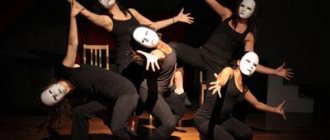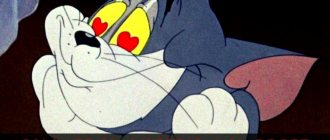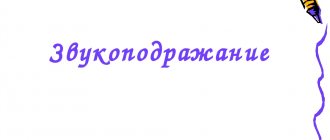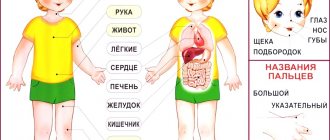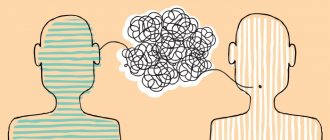Man is such an interesting creature that all manifestations of his essence, personality and feelings are perceived with interest. Facial expressions, for example, can tell a lot of interesting details about people, even if they themselves are silent. Gestures can also reveal someone else’s state. By observing people, you can learn many interesting details that will help you understand the truth or lies, emotions, mood and other characteristics of those around you. The psychology of facial expressions is truly extensive. To study it fully, one article or even a book is not enough. Nevertheless, some rules and tips will help you learn at least basic psychological “tricks” for use in the future.
General information and definitions
Physiognomy is the art of reading a person by his external signs, in particular by his face, his expression, features and facial expressions. You can determine both internal qualities and some psychological data, as well as health status. This method cannot be called completely scientific, but many are very seriously interested in it due to its certain validity. Facial expressions are facial expressions in which a person reveals his inner sensations, experiences, feelings, mood, emotions and other spiritual qualities. Gestures are body movements, most often with the hand/hands, that accompany or replace the words of the individual performing them. Posture is the position of the body. A person sits, stands or lies the way he likes/convenient/comfortable.
Gestures, postures, facial expressions - all this plays an important role in people's lives. Not a single person can live without them, and therefore, if you learn to recognize them correctly, life will become easier and more interesting. Facial expressions and gestures in communication are used everywhere and automatically; not everyone is able to control them. Thanks to this, more observant and attentive individuals have the opportunity to study people.
Face and facial expressions
What tells you best about a person? Of course, the face. It is this that is capable of giving away a person when he experiences some emotions, reacts to something, lies or tells the truth, etc. The language of facial expressions is rich and varied. It can be difficult to remember absolutely everything, but elementary features of sincere joy, for example, or disappointment can be retained in memory. And also learn to hide your own feelings. Despite the fact that human facial expressions and gestures are closely interrelated, they will be considered separately. So, let's go.
Reactions
Human facial expressions manifest themselves in different ways, and most often they can be seen in human emotions. The latter, in turn, are shown in reactions. Depending on their manifestation, you can find out what a person experiences from the information received. The difficulty is that some are afraid, others don’t want to, and still others are embarrassed to show their own emotions. Because of this, you will have to have time to notice the quick, involuntary reaction that appears very first. It is often almost impossible to completely control it, especially for an unprepared person. Therefore, you can determine the real feelings of your interlocutor, which he will most likely remove from his face in seconds, if you act quickly and extremely carefully.
Emotions
So let's continue. As mentioned just above, facial expressions in communication are manifested through the expression of emotions emanating from a reaction. Below are the most striking and significant of them, as well as ways of expressing them:
- Joy happiness. The eyebrows and lips are relaxed, the corners of the latter are raised on both sides, the cheeks are also raised, and there are small wrinkles in the corners of the eyes.
- Anger, irritation. The eyebrows are tense, brought together and lowered, the mouth is tightly closed. Often the teeth are brought together, as are the lips, the corners of which look down during anger or strong dissatisfaction.
- Contempt. Smirk. The corner of the mouth is raised on one side and a slight squint is visible in the eyes.
- Astonishment. The lips and face are generally relaxed, the eyes are rounder than usual, the eyebrows are raised up, and the mouth is slightly open.
- Fear. The eyebrows and upper eyelids are raised, and the lower ones are tense, like the whole face as a whole, the eyes are wide open.
- Sadness, disappointment. Slightly lowered upper eyelids and raised eyebrows, relaxed lips with corners looking down, as well as an empty, dull look.
- Disgust. The upper lip is tense and raised, the eyebrows are brought together, forming a small fold, and slightly lowered, the cheeks are also slightly raised, and the nose is slightly wrinkled.
Among other things, pictures will help you deal with emotions. The facial expressions on them are depicted well, which clearly demonstrates the inner feelings and experiences of the people depicted. Smiles, by the way, were also not invented in vain. Their facial expressions are often quite good, which is why they are in demand when trying to convey emotions via the Internet. After all, communication here mainly takes place in letters, which are not always able to convey the sensations experienced at one time or another.
Human condition
Sometimes it is enough to observe people a little to see what they are like. Facial expressions affect a person, and not only “one-time”, but for the rest of his life. The more clearly your interlocutor showed himself, the more you can find out about him. — Smart people most often have a large forehead. This does not mean that their knowledge is great in everything. Sometimes it happens that a person knows a lot of information in one area, but is completely ignorant in another. If your friend has a large forehead, but does not show any signs of special intelligence, perhaps he simply has not yet found his business.
— Brilliant eyes and a lively look mean that a person is passionate about someone/something. This usually happens to curious children who are interested in everything in the world. On the contrary, if a person’s gaze is dull and indifferent, it means that he is depressed, perhaps close to depression.
— If a lot of wrinkles appear in the corners of the eyes when laughing, this means that the person is kind, cheerful and cheerful.
— Bitten lips mean that a person likes to think and is most often nervous when making a decision. Sometimes people automatically begin to act this way right in front of their interlocutor, because they cannot decide something.
— A firm, developed chin (often square) shows a person’s strong will. Because people, when achieving their goals (even in an argument), tense the lower part of the face, it begins to develop. With frequent victories, the chin becomes strong and firm, which proves a person’s ability to achieve his goals. Based on this, if the lower part of the interlocutor’s face is soft, weak and undeveloped, it can be assumed that he is easy to break. He will not go to the end if a serious obstacle appears ahead.
— The more various bulges, irregularities, “hollows”, “protrusions”, etc. on the face (sunken cheeks, prominent cheekbones, for example), the more emotional and hot-tempered a person is. He can easily fall into a state of passion and vividly and vividly throw out his experiences on those around him.
Look and eyes
His eyes openly speak about a person’s inner experiences - it’s not for nothing that experienced “players” try to hide their expression behind the glasses of dark glasses.
People are usually extradited:
- any changes in the usual expression of the eyes - the emergence of a certain emotion, a signal of response to a stimulus;
- involuntary eye movements, noticeably “shifty eyes” - anxiety, shame, deception, fear, neurasthenia;
- a brilliant look - fever, excitement;
- glassy look - extreme weakness;
- enlarged pupils - a feeling of interest and pleasure from information, communication, photography, a partner, food, music and other external factors, acceptance of something, but also severe suffering;
- constriction of the pupils - a surge of irritation, anger, hatred, initial negative emotions, rejection of something;
- chaotic movements of the pupils are a sign of intoxication (the more such movements, the drunker the person);
- increased blinking - excitement, deception.
People always prefer to look at those they clearly admire, or those with whom they have close relationships, from a close distance;
Women show more visual interest than men. During communication, they most often look into the partner’s eyes when they listen, and not when they speak, although, when carrying out suggestion, they sometimes use direct gaze into the eyes at the moment of speaking the dialogue.
A person who looks you in the eye for noticeably less than one third of the entire communication period is either dishonest or trying to hide something; the one who openly persistently peers into your eyes, experiences increased interest in you (pupils are dilated), shows outright hostility (pupils are constricted) or strives to dominate.
Modifications of eye contacts have the following meaning:
- absent look - concentrated thinking;
- shifting your gaze to surrounding objects and to the ceiling - loss of interest in the conversation, an excessively long monologue of the partner;
- persistent and intent gaze into the eyes (pupils constricted) is a sign of hostility and a clear desire to dominate;
- persistent and intent gaze into the eyes (pupils dilated) is a sign of sexual interest;
- looking away and lowering your gaze - shame, deception;
- side view - distrust;
- the gaze then looks away, then comes back - lack of agreement, distrust.
Gesticulation
Both facial expressions and gestures in communication make it clear what and how a person says:
- Open palms signify trust and openness. If a person periodically exposes the inside of his hand to you, it means that he has nothing to hide from you, and he feels good in your company. If the interlocutor constantly hides his hands in his pocket, puts them behind his back, or makes other similar “secretive” movements, he is probably not very comfortable. This could be either dislike towards you or guilt/shame for past actions.
- Hands placed near the cheek mean thoughtfulness. Usually at such moments a person thinks intensely about something, tries to figure out what to do in a given situation, etc.
- When nervous or, more likely, lacking self-confidence, a person begins to touch either his neck or objects on it such as a pendant, chain, etc. In addition, he may begin to chew on the handle.
- A nod of the head signifies agreement. Sometimes people nod uncontrollably, thereby communicating on a subconscious level that they like someone else's opinion. Shaking your head, on the contrary, means that the person does not agree with you. Just like nodding, sometimes it happens automatically.
Personal space, communication areas
What kind of mood does a person have - types in psychology
To feel comfortable and free to use gestures, you need personal space. All people react differently to invasion of personal space. Anxious people tend to maintain a greater distance in communication. Confident individuals are less concerned about protecting their personal space. Aggressive people constantly try to expand their personal zone: their gestures are sweeping, and their poses are such as to take up as much space as possible.
Psychologists have calculated optimal zones for different types of interpersonal communication:
- An intimate area that involves physical contact. Its distance is from 15 to 45 cm. Only the closest people are at this distance.
- The personal zone is 75-120 cm. It is used in everyday communication with friends.
- Social zone – from 120 to 360 cm. At this level, official business communication is carried out.
- The public area is needed for lectures. Its level is 3.5-7.5 m.
Poses
Open facial expressions and gestures in communication are, of course, good, but we must not forget about the postures a person takes during a conversation:
- If a person sits relaxed, with his legs stretched forward, in your direction, this means that he is in a favorable mood. Approaching your interlocutor with a chair has the same meaning: a predisposition towards you personally and the conversation as a whole.
- Sometimes a person unfastens buttons, or even takes off clothes, such as a jacket. This proves his trust and open attitude towards you.
- If your interlocutor draws something simple on a piece of paper, often looks at one point, fiddles with a pen, shakes his leg, taps his fingers, does not express any special emotions, etc., it means that he is not very interested in you, because this signs of boredom. Change the topic of conversation or try to add liveliness to the dialogue.
- Crossed legs or arms (on the chest, for example) mean closedness, withdrawal, reluctance to communicate and open up. Perhaps the person simply feels uncomfortable, and this condition will soon pass, or perhaps it is unpleasant for him to be in your company.
What do gestures indicate?
Emotions are one of the main factors that force us to stop controlling the behavior of the body. When trying to identify hidden feelings and thoughts, you need to remember that some gestures depend on the situation that has arisen. Example: frost can make a person close up, cross his arms over his chest, trying to keep warm. The psychology of gestures classifies such a movement as an attempt to protect oneself from unwanted events.
Studying the secrets that the psychology of human behavior hides, facial expressions and gestures are assessed, first of all, based on the surrounding environment. If there are no factors that provoke double judgment, it will be possible to recognize the truth without much difficulty.
Basic gestures that allow you to determine a person’s intentions, feelings, desires:
- The desire to open up, to gain trust - gesturing with open palms pointing upward, connecting the fingers of two hands under the chin, at chest level.
- Threat. Nervous massage of the neck, chin, tension in the arms. The person tries to distract himself and not provoke a conflict, but if necessary, the reaction will be instantaneous, the interlocutor will not hold back.
- Mistrust. Hands pressed tightly to the sides create an insurmountable barrier, indicating a reluctance to believe. You will have to make a lot of effort to convince you that you are right, to convey the truth, to impose an opinion.
- Interest. Women often show interest in the opposite sex - they strive to look impeccable, straighten their hair and makeup, their gait becomes seductive, with a soft sway of their hips.
- The desire to avoid conversation, communication. Objects in the hands of the interlocutor, which a person enthusiastically manipulates, distracting from the topic of conversation, are evidence of a lack of interest and a desire to end the conversation as quickly as possible. Searching for non-existent items in a bag, package, or wallet is another evidence of quickly getting rid of an unwanted conversation and going about your business.
- Lack of interest. The main signals are that a person is stomping around, shifting, actively yawning, leaning his head on his hand, trying to focus his gaze on a foreign object.
- Negative mood, negativity. The hands are clasped behind the back, the legs are tense, ready to move, soon the person is able to show aggression and rush into a fight.
- Showing sympathy. Leaning forward is the main sign of interest in the interlocutor, a friendly disposition, and a desire to prolong the relationship.
- Protection. Distrust of the interlocutor, reluctance to get into a quarrel, lack of desire to communicate is determined by crossed arms and legs. Clenched fists are a signal of aggressiveness; you should not provoke conflicts.
If it’s difficult to figure it out on your own, you need to find out more about what body language and gestures tell, psychology in pictures will allow you to clearly determine the features and secrets of movements.
How to recognize truth and lies from a person
That’s why many people are interested in the details of our article - everyone wants to know how to read a person’s facial expressions, how to see when they are blatantly lying to you, and when they are telling the pure truth. Some ways to expose a liar are given below, but remember that, perhaps, the liar has known about such tricks for a long time, and therefore uses them skillfully and dexterously, deceiving others in such a way that a mosquito will not undermine his nose.
- When a person tells a lie, his pupils involuntarily constrict. If you have previously noticed the initial state of the interlocutor’s eyes, then you will understand that he is being disingenuous after the pupils become smaller.
- When a person lies, he looks away. This happens because he is subconsciously ashamed of the false information he says.
- When a person is lying and knows about the previous method, he looks intently into the eyes. Most often, he gets so “played” that he barely even blinks. This can also reveal a liar.
- The gaze of a lying person moves from one object to another, without stopping at one thing. Sometimes it's just a sign of nerves, but more often it's a sign of lies.
- Thanks to the compression of the zygomatic muscles, a kind of half-smile, half-grin appears on the face of the lying person.
- The direction of your gaze will also tell you whether you are hearing the truth or a lie from your interlocutor. If a person looks to the right, most likely, you are being presented with a lie, if to the left, the truth. However, this rule applies provided that the speaker is right-handed, otherwise read backwards.
How is surprise expressed in the lower part of the face?
When a person experiences this emotion, his jaw involuntarily opens. Dropping of the lower jaw leads to loosening of the dentition. The mouth becomes relaxed, his lips are in an open position. Such facial expressions of surprise are often referred to as “the jaw dropped,” since the mouth looks open as naturally as possible.
The degree of such openness may be moderate or significant. A slightly open mouth may show the upper incisors, but the greater the surprise, the more the tongue is visible. A dropped jaw may be the only sign of surprise on the face and demonstrate stunnedness. The stronger it is, the more likely the appearance of such characteristic sound combinations as “O-oh” or “Wow”.
To summarize, we can describe facial expressions of surprise as follows:
- eyebrows rise and bend, which tighten the skin of the upper eyelids;
- wrinkles of surprise gather on the forehead;
- the eyes are open as much as possible and show the sclera above the iris;
- the jaws open, exposing the teeth.
Features of foreign language of facial expressions and gestures
Not everywhere they communicate in the same ways as here. Of course, this does not mean human language, but the language of gestures, postures and facial expressions. The list below, indicating specific countries and incorrect actions, will help you avoid getting into trouble with foreigners. Asia. Watch your arms and legs. You should not be the first to touch someone else’s head and hair, because for Asians this is the most sacred thing in a person. The legs, in turn, also don’t need to be loosened, though not at all. Even an accidental touch (to any part of the body) can cause panic and even anger on the part of Asians. This is because, unlike the head, the legs are considered the “lowest” thing in the human body. Near East. Giving a thumbs up is the same as giving a person a punch in the ass. Children, however, often show this gesture, thereby trying to tease others. Brazil. The “everything is okay” gesture (the thumb is connected to the index finger, forming a zero, and the remaining fingers stick out “out”) here has approximately the same meaning as our middle finger. Venezuela. The “everything is okay” gesture here denotes homosexuality. Italy. The “Goat” gesture from rock music here signifies betrayal and failure. That is, if you show this sign to someone, you are hinting that you consider him a complete loser who is being cheated on by his other half. In northern Italy you are also not allowed to touch your chin, as this means you are giving the person the middle finger. Fiji. A handshake is considered a trademark of the republic, which is why you should not be afraid if the interlocutor holds your hand tightly and for a long time in his. This is just a sign of politeness, and it can really last a considerable amount of time, right up to the end of the conversation. France. The “everything is okay” gesture here denotes homosexuality, and scratching the chin is the same middle finger.
Facial expressions
Facial expressions mean movements of the facial muscles. Facial expressions can be highly mobile, inactive, monotonous and conjugate. Highly mobile facial expressions indicate liveliness and rapid change in the perception of impressions and internal experiences, and easy excitability from external stimuli. Sedentary facial expressions indicate the constancy of mental processes. Such facial expressions are associated with calm, constancy, prudence, reliability, superiority and balance. Sedentary facial play can, with reduced activity (motor strength and temperament), also produce the impression of contemplation and comfort. The cause of monotonous facial expressions may be movement disorders, stiffness or paralysis. This behavior is typical in depression, sadness, and emotional poverty. Most facial expressions are conjugate. They consist of many individual expressions, but are interconnected. Statements like “he opened his mouth and opened his eyes”, “cold eyes contradict a laughing mouth” and others indicate harmony or disharmony of emotional processes and their manifestations in a particular case.
The auxiliary function of eye expression in most cases is performed by the muscles of the forehead. Due to the muscular movements associated with eye activity, wrinkles are formed. Longitudinal wrinkles above the bridge of the nose are a sign of a desire fixed in the mind. Vertical wrinkles are an expression of mental or physical stress. The reasons for their occurrence can be strong determination, stubbornness, willfulness, dissatisfaction and irritation.
Transverse wrinkles on the forehead occur with raised eyebrows and wide open eyes, which indicates a desire to perceive as much information as possible. This is a facial expression of fear, horror, misunderstanding, surprise and unexpected enlightenment (understanding something).
Eyebrows are very informative in expressing emotions. Wrinkled eyebrows are usually associated with tension, criticism, displeasure, beyond normal physical or spiritual activity, anger, rage and shock. Eyebrows in the shape of a convex crescent, on the contrary, express surprise and bewilderment in certain situations, and in others, in combination with a smile, joy and pleasure.
If you wrinkle your nose, a cluster of wrinkles will appear diagonally towards the bridge of your nose. They indicate disgust, embarrassment, discomfort and hostility. The process of wrinkling the nose is part of the reaction to bitterness, when the upper lip also rises slightly. When the muscles involved are frequently activated, a so-called sensitive wrinkle is formed. In this case, the upper tip of the nasolabial fold cuts deeper into the corner of the nose. If the nasolabial fold is clearly visible not only in its upper part, but also in the area from the corners of the nose to the line of the mouth, then it is also called an “intensive fold.” It signals energy, vitality and the ability to endure heavy loads.
The mouth also greatly determines facial expression. The mouth is the most mobile part of the face. He is the center of every smile and every pain. Lips protruded forward should be regarded as a hostile expressive signal, and if they are pursed, then this is already a symbol of withdrawal into oneself, giving rather the impression of fear. If pursed lips are tense and compressed, this expresses impotent anger. If the mouth is distorted during conversation or laughter and the alternation of movements is disharmonious, then this expresses negative aspirations even if all other signals are positive and the face seems friendly. If the mouth is twisted to one side and this is not caused by a health condition, then we can talk about the person’s tendency to be mocking and contemptuous. Twitching and trembling of the mouth is an alarm signal, warning of increased nervousness and calling for caution. Darwin called the downturned corners of the mouth “the vestige of a crying man.” Such corners of the mouth are an element of the bitterness reaction. The triangularis muscle, also called the “sorrow muscle,” pulls the corners of the mouth down. Relaxedly downturned corners of the mouth indicate a joyless state, sadness, disappointment and painful refusal of something. They are often an expression of a negative life attitude. This expression is also characterized by the words: mi “his face is long.”
Smile. The freer and more relaxed a smile seems to us, the more it is an expression of naive, pure joy. Such a smile is the most charming form in the facial repertoire, possessing extremely pleasant content for others. A forced, made-to-order smile turns into a movement of intention with quite little content of feeling. It suddenly appears and just as unexpectedly disappears. Because of this, the hypocritical intentions hidden behind her become obvious. “To order” smiles also include a smile of embarrassment. She is also inorganic. This is a forced smile, which is often used as compensation, for example when expressing sympathy. A sugary smile, like a slightly noticeable stretching of the lips, produces an exaggerated, slightly feigned impression, expressing more than what is actually experienced. A smile in which the lips remain closed in a rather tense state. Due to this, this type of smile expresses some volitional effort. Tension can signal both attention and a tendency to dominate. Pursed lips express detachment. Often a grin also contains a malicious expression. In this case, it turns into a mimic expression of joy over something that should be kept secret. A grin is a smile-grimace. By such a smile you can judge that perhaps in front of you is an arrogant or provoking insidious person. The downturned corners of the mouth (“sour” reaction) give the face the expression of a person “overflowing with sarcasm.” With a crooked smile (or fake laughter), only one of the corners of the mouth either rises or falls. The organic discord thus manifested expresses a state of internal discord. This smile makes it possible to hide a genuine opinion behind feigned friendliness (for example, when a boss or respected person tells some joke and the employees have to laugh out of politeness, although the joke itself was no longer new, and there was little funny in it). With a derogatory smile, the corners of the mouth are slightly lowered. The shape of the mouth expresses both affirmation and negation. The derogatory smile is a weakened version of the sarcastic smile. This is how a person smiles, tuned in to gallows humor or refusing everything, as well as arrogantly ironic, omniscient or gloating about one thing or another.
The head, as the bearer of the most important human organs, is given special significance in the dynamic body language. Numerous expressive behaviors are manifested, for example, in the fact that for improved perception the head moves forward, for defensive purposes it moves back, when avoiding something it moves to the side, and when approaching it leans forward. If the head hangs without tension, then this means lack of will, apathy, lack of impulse and hopelessness. In the absence of tension in the occipital muscle, the head falls to the chest. If the head is bowed and the gaze is directed downward, then this indicates submission. If such a tilt of the head is used when greeting, then we are dealing with conscious submission corresponding to politeness, i.e. symbolic submission. In combination with a bow, this expresses refusal to express one’s will or tacit approval. Depending on the degree of head tilt and the duration of the absence of eye contact, one can speak of either shyness or a manifestation of submission.
A sideways glance with a bowed head signals readiness to fight, aggressiveness, reveals a feeling of joy from being in opposition and stubbornness. If the gaze is directed slightly to the side, then one can draw a conclusion from it about deceit or awareness of one’s guilt. This is how observation is carried out, full of expectation, or a hidden search for weaknesses in someone else. In combination with wide open eyes, relaxed neck muscles and the position of the eyes, when the visual axes are almost parallel to each other, a state appears when a person has “attacked some kind of trace.”
The one who appears before you with his head up feels free and confident, without fear. In accordance with this, raising your head means self-esteem and readiness to begin any task. Often, straightening your head involves taking a deep breath. Such simultaneous replenishment of air reserves indicates the presence of a will to act and a readiness for a frank trial. If the head is raised upward, this expresses proud inaccessibility and arrogance. It also makes a defiant impression on others.
If the head, which was held straight, sluggishly leans back, then this is an expression of dedication. Unlike submission, when lowering the head, along with reducing the impact, also leads to simultaneous protection of the neck, in this case they are defenselessly surrendered to the power of another person. From this position one can also judge that this or that person is in the power of memories, pleasures experienced while enjoying this or that type of art, etc. In combination with laughter, submission is transformed into pretense and expresses helplessness. This position of the head should be distinguished from the position of the head, relaxed back. In this situation, they speak of a decrease in concentration of attention; it is often observed in people in dreams and during contemplative behavior. If this position of the head “does not fit” into the situation, then we can talk about softness, laziness and a thirst for pleasure. Another almost similar position of the head - thrown back - but with a tense neck, indicates aggression, assertiveness, and courage. In combination with a piercing gaze, throwing back the head gives the impression of impudence, and when turning the entire body towards the counterpart, it also gives the impression of intrusiveness. The more impetuous the movement is, the more nervous excitement it contains. In such cases, a strong protest and an insult to self-esteem can be expressed in this way. With a calm version of this movement, one can draw a conclusion about the behavior of superiority. This can be expressed either as a silent invitation or as a silent question.
The head placed forward indicates a desire to bring the senses closer to the source of irritation, that is, it indicates the presence of interest. This head position is also used for threatening behavior. The person seems to demonstrate: “I perceive all the stimuli transmitted by you, and I am not afraid of them.” A full turn of the head and slight tension indicate interest, expressed without any restraint or any ulterior motives. With an incomplete turn of the head, not the entire face is turned towards the partner. Due to the incomplete turn of the head, eye contact is established using a gaze directed from the corners of the eyes, obliquely, which signals the person’s interest. With a restrained expression of interest, the head turn slows down. It seems that this object or partner is not worthy of turning your whole face towards it. Therefore, such behavior is perceived as offensive. If the head is turned away, then interest in the contemplated object has disappeared. The speed and degree of intensity of the movement performed provide quite important additional information. If turning away is dictated by anger, then it always contains strong tension.
Gestures.
In business communication, there are several main types of gestures that reflect the state of a person. Gestures of openness indicate sincerity and a desire to speak frankly. These include “open hands” (outstretched towards the interlocutor with palms up) and “unbuttoning the jacket”. The one who changes his decision in a favorable direction usually unclenches his hands and automatically unbuttons his jacket. When it becomes clear that an agreement or a positive decision regarding the issue under discussion is possible, as well as in the case when a positive impression of working together is created, those sitting unbutton their jackets, straighten their legs and move to the edge of the chair, closer to the table that separates them from those sitting opposite the interlocutors. Gestures of secrecy include rubbing the forehead, temples, chin, trying to cover the face with one’s hands, and avoiding eye contact. Defensive gestures and postures are signs that the other person is feeling threatened. The most common is crossing your arms over your chest. Hands can take several characteristic positions (FOOTNOTE: G. V. Borozdina. Psychology of business communication. M., 2002. P. 138-139.).
Simply crossing your arms is a universal gesture that indicates a defensive or negative state of the interlocutor. This gesture also influences the behavior of other people. If in a group of four or more people one of them crosses his arms in a defensive posture, the group members will soon follow suit. Sometimes this gesture can simply mean calm and confidence when the atmosphere of the conversation is not conflicting. Crossing your arms helps you concentrate when you are thinking out loud or remembering an event.
If, in addition to crossing his arms on his chest, the interlocutor also clenches his fingers into a fist, then this indicates his hostility or offensive position. You can relieve your interlocutor's overexcitement by slowing down your speech and movements, reducing the overall pace and emotionality of the conversation.
The gesture when the hands of crossed arms clasp the shoulders (sometimes the hands dig into the shoulders or biceps so tightly that the fingers turn white) means restraining the interlocutor’s negative reaction to the partner’s position on the issue under discussion. This gesture appears when interlocutors are arguing, trying at all costs to convince each other of the correctness of their position, and is often accompanied by a cold, slightly narrowed gaze and an artificial smile. This facial expression means that your interlocutor is at the limit, which may result in a breakdown in negotiations.
The gesture of crossing the arms across the chest, but with the thumbs extended vertically, conveys a double signal: the first is about a negative attitude (crossed arms), the second is about a feeling of superiority expressed by the thumbs. In this case, a person usually plays with one or both fingers, and while standing, sways on his heels. Such a gesture also expresses ridicule or disrespect towards the person at whom the thumb is pointed, as if over the shoulder.
Gestures of reflection and evaluation reflect a state of thoughtfulness and the desire to find a solution to a problem. These include “hand on the cheek” (the interlocutor is interested in something), “pinching the bridge of the nose”, which is usually combined with closed eyes (intense thinking), “scratching the chin” (decision making). When the interlocutor raises his hand to his face, resting his chin on his palm, and stretches his index finger along his cheek (the other fingers are below his mouth), this is evidence that he critically perceives the arguments of his communication partner.
Gestures of doubt and uncertainty are most often associated with scratching with the index finger of the right hand under the earlobe or on the side of the neck, as well as touching or lightly rubbing the nose (“Pinocchio syndrome”).
Gestures and postures indicating a reluctance to listen and a desire to end the conversation: scratching the ear or pulling the earlobe, turning the body towards the door, twitching the feet. If a person wears glasses, then his characteristic gesture of wanting to end the conversation is to take off his glasses and put them aside.
Gestures indicating a desire to deliberately delay time are usually associated with glasses: the interlocutor takes them off, puts them on, and wipes them. In this case, it is recommended to wait until your partner puts the glasses back on. Sometimes a person begins to pace when making a difficult decision, and here it is important not to disturb him.
Gestures of confidence and superiority: putting your hands behind your back and grabbing your wrists (this gesture should be distinguished from the “hands behind your back” gesture, in which case the person is upset or angry and is trying to pull himself together), putting his hands behind his head (this gesture is usually very annoying to the interlocutors). In this case, psychologists recommend asking some kind of clarifying question, preferably in a visual form (show an object or a drawing), so that the interlocutor leans forward.
Gestures of disagreement: picking up non-existent lint from a suit, looking at the floor.
Gestures of readiness signal the desire to end the conversation and are expressed in moving the body forward, slowing down the pace of speech and increasing its volume. In this case, psychologists advise being the first to suggest ending the conversation, which will allow you to maintain a psychological advantage and control the situation. Rubbing palms communicates positive expectations. Clasped fingers indicate disappointment.
When analyzing pantomime, it is important to pay attention to involuntary, ideomotor movements. It must be taken into account that the upper part of the body is better controlled than the lower part, and the right side of the body for right-handers is better controlled than the left. Leg movements are especially informative. Twitching of the foot indicates impatience or irritation. They drum their fingers in anticipation. They twirl something in their hands when they behave uncertainly. It is important to pay attention to involuntary twitches of the non-dominant hand (if they occur) when a person listens to an unexpected unpleasant question.
Needs for a communication system Need for security. A person feels safe if there is no aggression (real or potential) from other people. One of the serious aggressive actions is

